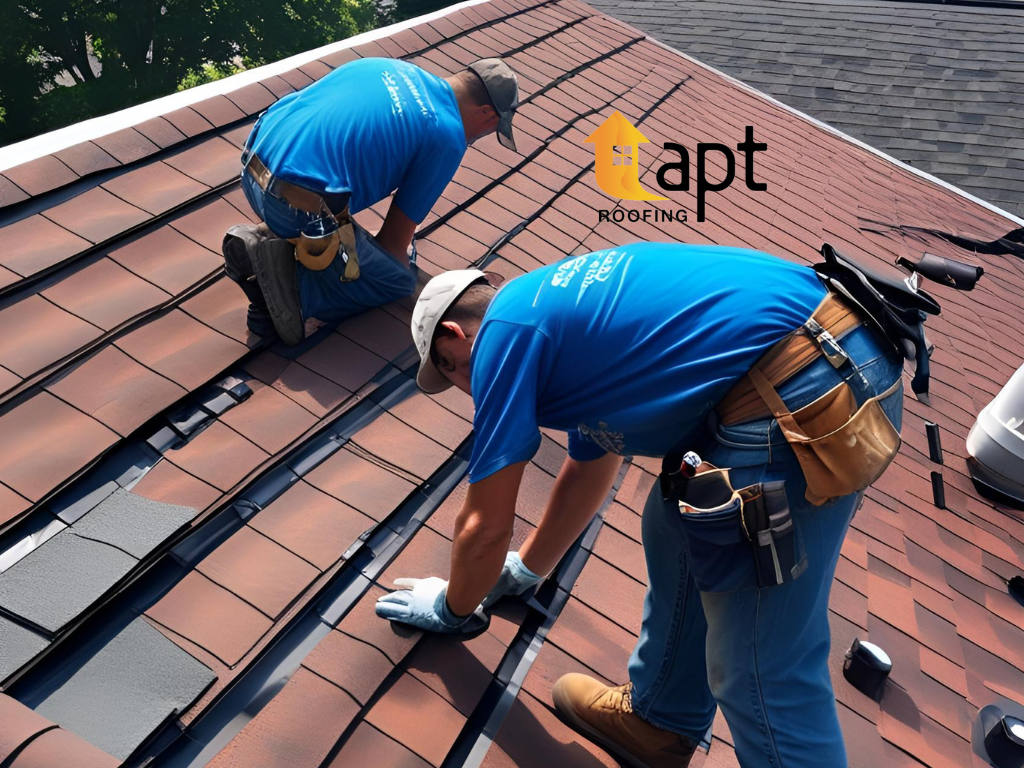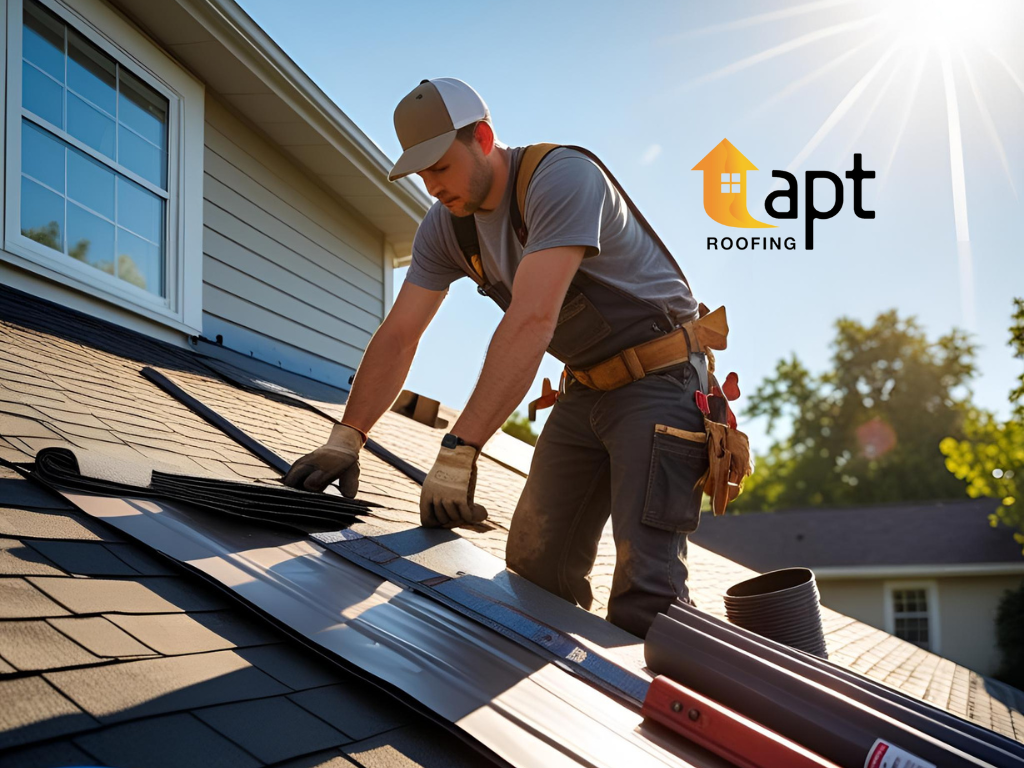Roof problems rarely come with a warning. One day, everything looks fine—and the next, you’re dealing with a leak, water damage, or even collapsed tiles. That’s why emergency roof repairs often feel so overwhelming. Many homeowners don’t realise there’s a problem until it’s already caused damage inside the home.
Small issues like cracked flashing, loose tiles, or blocked gutters can silently build up. Most people don’t notice these signs until a heavy storm pushes things over the edge. Water starts seeping in through ceilings or walls, and suddenly, you’re in a full-blown emergency.
What Turns a Minor Issue into an Emergency Overnight
It often takes just one downpour to turn a small roofing problem into an urgent repair job. In fact, things like tree branches falling, unexpected hail, or even strong winds can break tiles or lift metal sheets. That’s when leaks begin—and they rarely wait until a convenient time.
What makes things worse is that most people don’t schedule regular roof inspections. This gives problems time to grow. So, by the time water enters the home, the damage under the surface might already be significant.
That’s why emergency roof repairs are so important—and so common. A little preparation and early spotting of issues can save you a big headache later.
The First 24 Hours: What You Should (and Shouldn’t) Do
What Steps Help Prevent Further Damage
Once you notice a leak or roof problem, acting quickly can help limit the damage. First, move valuables out of harm’s way—especially electronics, soft furnishings, or family keepsakes. Then, place buckets or towels where water is dripping to control any mess.
Next, turn off any electrical sources near the affected area. Water and power don’t mix well. Try to take photos of the problem too. These can help your insurance claim and guide your roofer.
After that, it’s time to contact Roofers in Sydney. Many have emergency response options, so don’t hesitate to make the call. The sooner you get a professional involved, the better.
What Mistakes Could Make Things Worse
It’s tempting to go up on the roof to see the problem for yourself—but this is one of the most dangerous things you can do, especially during bad weather or at night. Never attempt emergency roof repairs on your own unless you’re trained and have the right equipment.
Avoid using temporary patch jobs from hardware stores unless advised by a professional. While tarps can sometimes help, improper use may lead to more leaks or structural damage.
Instead, stay safe inside, document the issue, and wait for help from a licensed Roofer in Central & Inner Metropolitan or surrounding areas.
How to Find Reliable Roofers in a Hurry

What to Check Before Saying Yes to a Roofer
When you’re panicking over a leak, it’s easy to go with the first person who answers the phone. But choosing the wrong roofer can lead to bigger problems later. Start by checking if they’re licensed, insured, and have experience with emergency roof repairs.
Ask if they offer 24/7 support and how fast they can get to your property. It also helps to find someone local—like a Roofer in Central & Inner Metropolitan—so they can respond quickly and understand local conditions.
Where to Find Emergency Support Fast
Search online for trusted Roofers in Sydney, and pay attention to recent reviews. Word of mouth also helps. Ask neighbours or local community groups if they’ve had a good experience. Some roofing companies even specialise in emergency response, which can make all the difference.
Why Your Location Affects Response Time and Cost
Why Some Suburbs Get Faster Service Than Others
Not all suburbs have the same access to quick roofing support. If you’re in the city, finding Roofers in Sydney or a Roofer in Central & Inner Metropolitan might be fast and easy. But if you’re further out, like needing a Roof Repair in Outer Western Suburbs, the wait could be longer.
This delay isn’t just about distance—it’s also about how many emergency jobs the roofer already has lined up that day.
What to Expect in Different Areas Across Sydney
If you’re based in places like Kingsford or Sutherland, your experience may vary. Some services, like roof repairs kingsford or Roof Replacement Sutherland, could cost more due to limited availability or travel time. It’s always smart to ask upfront about response windows and call-out fees depending on where you live.
Insurance, Photos, and Paperwork You’ll Be Glad You Had

How to Document the Damage the Right Way
Before any repairs begin, take as many clear photos as you can. Include inside damage (like stained ceilings) and external shots of the roof if it’s safe. Also, keep a record of the time damage was discovered and any communication with your insurer.
This is where working with a reputable company like APT Roofing helps. They offer all types of roofing services—roof installation, roof replacement, roof repair, and emergency roof repair. Plus, they’re experienced in helping homeowners with the paperwork needed for insurance claims.
What to Ask Your Insurance Before Work Starts
Contact your insurance provider as soon as possible. Ask if they cover temporary fixes, full repairs, and if you can choose your own roofer. Find out whether an inspection is required first or if photos will do.
Being prepared with all the right documents will make your claim faster—and your stress level lower.
Should You Repair or Replace the Roof?
When a Patch Job Makes Sense
Not all emergencies call for a full replacement. Sometimes, a simple patch, tile replacement, or sealing job is enough—especially if the roof is in otherwise good condition. It’s important to ask your roofer what’s possible short term vs. long term.
When to Consider Full Roof Replacement Sutherland
If your roof is over 20 years old, has widespread damage, or has needed multiple fixes already, it might be time for a full Roof Replacement Sutherland. Replacing the roof can prevent ongoing costs and give you peace of mind during the next storm season.
What You Can Do Today to Avoid the Next Roof Emergency

Simple Checks That Save Big Problems
Prevention is powerful. Clear your gutters every few months. Look out for missing or cracked tiles. Check your roof after every storm—even just from the ground. If you see something unusual, call for a professional inspection before it gets worse.
How Regular Inspections Help Avoid Future Surprises
Book a yearly inspection with a reliable Roofer in Central & Inner Metropolitan or nearby provider. They’ll catch small issues early, which means fewer surprises and more money saved in the long run.
Being proactive is the best way to reduce your risk of needing emergency roof repairs down the track.

